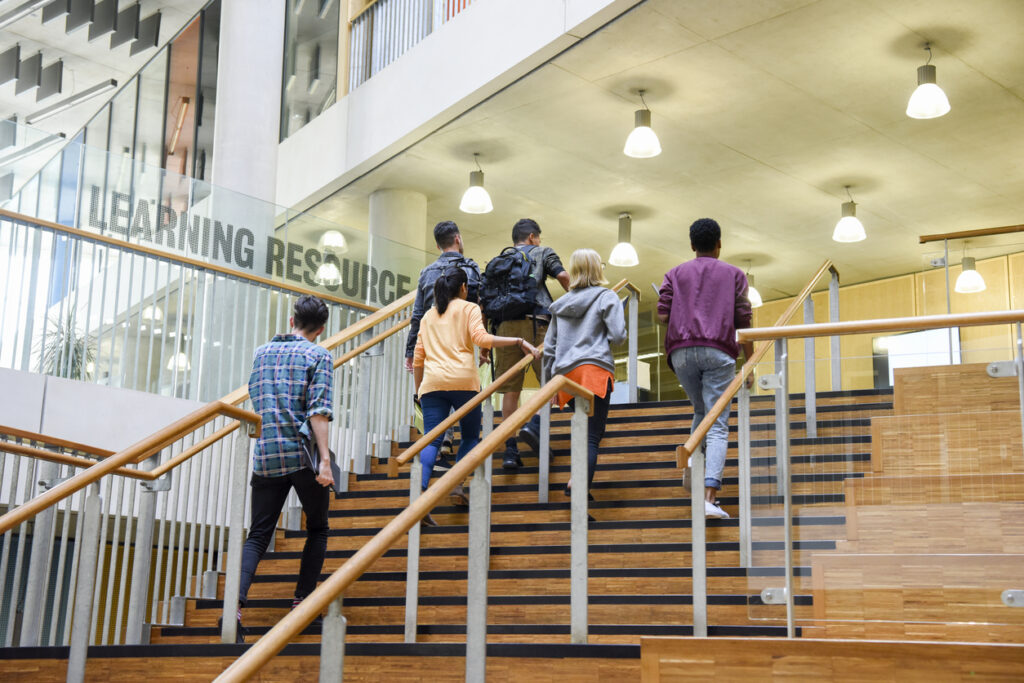The importance of relationships, vision, and cultural alignment
Following the announcement of the coming together of the universities of Kent and Greenwich, discussion of possible institutional mergers has reached fever pitch. There has frequently been speculation about the likelihood of mergers in the UK HE sector and this has intensified as the challenges facing institutions have grown. Beyond Greenwich and Kent there are quite a few examples of mergers which have taken place in recent years; it’s just not quite as many or at the pace predicted by many commentators.
Mergers are just one end of a broad spectrum of collaborative and partnership activities, and there is plenty of advice available for institutions looking to engage in such activity. There has been some helpful material published by UUK and Jisc on shared services and transformation and also a brief piece emerging from an AdvanceHE Big Conversation discussion on the topic. KPMG and Mills & Reeve also recently published a ‘toolkit’ covering the spectrum of partnership and merger models described as radical collaboration.
How are institutional mergers different to commercial mergers?
With all of the issues institutions are grappling with right now it is understandable that many are looking for the potential opportunities offered by these bolder solutions and being willing to consider more of a commercial approach to mergers and acquisitions (M&As). However, commercial M&As are very different to the much more polite dance, which is often the nature of developing relationships in higher education – they are usually much more hard-nosed and keenly focused on financial benefits.
Commercial mergers also tend to be pretty clear about whether it is a merger or an acquisition which is being explored, whereas HE tends to describe all acquisitions as mergers, regardless of the disparity in size. Being frank about when an acquisition is just that and not a merger would probably be more helpful than trying to sustain a polite pretence, just because we don’t want to upset anyone.
A long history of collaboration
Higher education has a very long history of collaboration – going right back to the development of civic universities and the services provided by the University of London external examination system, which provided the initial awarding route for nascent institutions established from the middle of the 19th century through to the middle of the 20th century.
Additionally, in the late 19th century, Oxford University provided external examiners for Durham to enable it to ensure the comparability of its academic standards.
Later on, collaboration was also driven by research needs where joining up locally, nationally and internationally with disciplinary peers was essential to remain at the forefront of intellectual endeavour. During times of crisis, be that world war or pandemic, universities have helped each other too (as well as helping others). Collaboration is therefore genuinely a feature of the sectoral ethos.
There has always been an element of competition too but on the whole the culture of working together has been strong even where institutions were competing to recruit students. The competitive component grew and accelerated towards the end of the last century and into this one as HEIs’ dependence on domestic and international student fees increased.
Regulatory involvement
The involvement of the Competition and Markets Authority (CMA) in higher education has not been particularly welcomed by the sector and its interests in HE have, if anything, had a cooling effect on potentially beneficial collaborations. However, recent comments from the CMA have been more constructive (even though they still seem quite under-informed about the realities of higher education operations).
It is important to note that most of the HE-related CMA regulation is focused on protecting the interests of prospective and existing students as consumers and, as originally published in 2015 and updated in 2023, the organisation’s guidance to universities and colleges covers requirements such as:
- The need for clear, timely, accurate and comprehensive information provision for students;
- Fair and transparent terms and conditions between HE institutions and their students;
- Ensuring that institutional complaints processes are accessible, clear and fair to students.
But the other element of legislation which is relevant here relates to bodies distorting the market in a way which is detrimental to consumers. It is this area with which universities and colleges are currently most concerned and where the impact of the CMA regime has at times been quite debilitating, with institutions looking to collaborate, or form other closer relationships often feeling they are risking regulatory intervention by even having discussions about the possibilities.
It’s good to talk
Strange as it may seem to outsiders, institutions, despite the pressures to compete and all that CMA anxiety, are still able to talk to each other at all levels and get on just fine. Competition happens and can be extremely fierce, for research grants and for students as well as public plaudits of various kinds.
There are different parts of the sector too, particularly where we have newer institutions, perhaps private rather than public, for which competition, growth and survival is much more part of the landscape and research and the collaborative tradition is a lesser part of things. But fundamentally for longer established universities this is part of what they do, and many of their academic staff see this kind of co-operative activity as a key part of their role. Indeed, in many disciplines, academic staff are all part of subject associations or professional or scholarly bodies which exist for mutual support, networking and research sharing (and in some cases professional accreditation too).
Beyond these long-established collaborations it is worth noting that professional services staff also have specific networks which serve as support mechanisms, but also as vehicles for sharing new approaches to solving common problems. University mission groups also promote collaboration, as do international networks such as Universitas 21, the League of European Research Universities and the Worldwide Universities Network. But sometimes things do go further.
Going all the way
Mergers in HE have always been talked about. Acquisitions have happened in waves including colleges of education in the 1970s and 80s and colleges of nursing and midwifery in the 1990s. There have also been other significant examples, including those involving parts of the University of London, and some of the more notable mergers of the past 20 years include:
- Joining up of UMIST and the Victoria University of Manchester to form the University of Manchester;
- Creation of London Metropolitan University from the merger of the University of North London and London Guildhall University;
- The bringing together of the University of Glamorgan and University of Wales to form the University of South Wales;
- Creation of the University of Cumbria from a collection of institutions or parts of other institutions in the North West of England;
- The merger of Anglia Ruskin University and Writtle University College (although this was closer to an acquisition given the relative sizes of the institutions);
- The creation of the University of the Highlands and Islands from a collection of colleges and research institutions;
- The launch recently of City St George’s University of London following the merging of City and St George’s.
There have also been others, but these are just some of the most prominent examples. The final one on the list here, which is the most recent example of a completed merger, is the subject of a recent report from AdvanceHE, which provides some helpful commentary and a handy 48-point checklist for potential merger partners to consider.
Creating ‘super universities’
Given the financial challenges facing many HE institutions across the UK at present there has been much speculation about the possibility of mergers. The recent headlines about the creation of a ‘super university’ from the merger (if indeed it does end up being a full merger) of the Universities of Kent and Greenwich caught many by surprise.
This is a relationship built on the foundation of existing meaningful collaborative activity, shared challenges, and an up-front agreement about who the Vice-Chancellor will be (an absolutely crucial factor – the failure to agree on this point has derailed other potential mergers in the past).
There are no doubt other factors too pushing the two universities together, but the key fact here is that the model they came up with was right for them – having decided they wanted to come together they then agreed the structure which worked for them. They do seem to have carefully considered the sequencing of the cart and the horse.
Considerations for a potential merger
This must be the right approach. Any discussions of this type need to take into account a wide range of factors including:
- A shared vision for a future merged institution;
- Recognition of the history of the institutions and existing relationships;
- The need for confidentiality to allow for freedom in discussion of options;
- Clarity on leadership (there can only be one Vice-Chancellor);
- The existence of a senior ‘coalition of the willing’ who will embrace the opportunity and drive progress;
- The need for a full risk assessment including exploration of legal and regulatory risks and issues and commercial matters from estates to IT.
- Clear plans for developing joint structures, systems and processes;
- Change management arrangements to ensure effective delivery;
- External professional support as may be necessary;
- A recognition that a process of merger is difficult to undertake – it takes time, energy and commitment and will take many years to implement fully.
This is, of course, a non-exclusive list of considerations. What it highlights though are the many different dimensions to be addressed in looking to the possibility of merger. However, in these cases, it does seem that the CMA is likely to be less likely to express an interest than with specific arrangements for course closures across institutions.
A large number of stars have to be aligned for merger talks to conclude successfully. Both parties will need support and advice but what they could probably do without is a set of models developed by others which they then grapple with and try to make fit their situation. They need to focus on what they are seeking to achieve then look for support to make it happen.
Adapting structures, governance and management arrangements to fit an idea for collaboration is easier than doing it the other way round. There are plenty of good articles describing how this has worked for others and presenting interesting case studies but templates to follow really are not much help as every case is different. Merger does not end on merger day either, but carries on for many, many years. Cultural integration is the longest, hardest run; it takes a long, long time for established silos to break down.
How we can help
In exploring closer collaboration, or indeed mergers, institutions involved should focus on relationships, vision and cultural alignment rather than templates, blueprints and toolkits. And get the cart and the horse in the right order.
If you would like any further information or support in relation to higher education collaboration or merger issues, then please do get in touch with our expert education team.
Our latest education content
OfS Consultation on the future approach to quality regulation
Employment Law Update for Schools: What You Need to Know
The updated CMA guidance for higher education – what’s changed?
See more articles >
Towards Effective and Ethical Governance – Our Contribution to the CUC Code Review
The New Anti-Fraud Law with Big Implications for Education Providers
Higher Education Collaborations and Mergers: Getting the Cart and Horse in the Right Order
See more articles >







